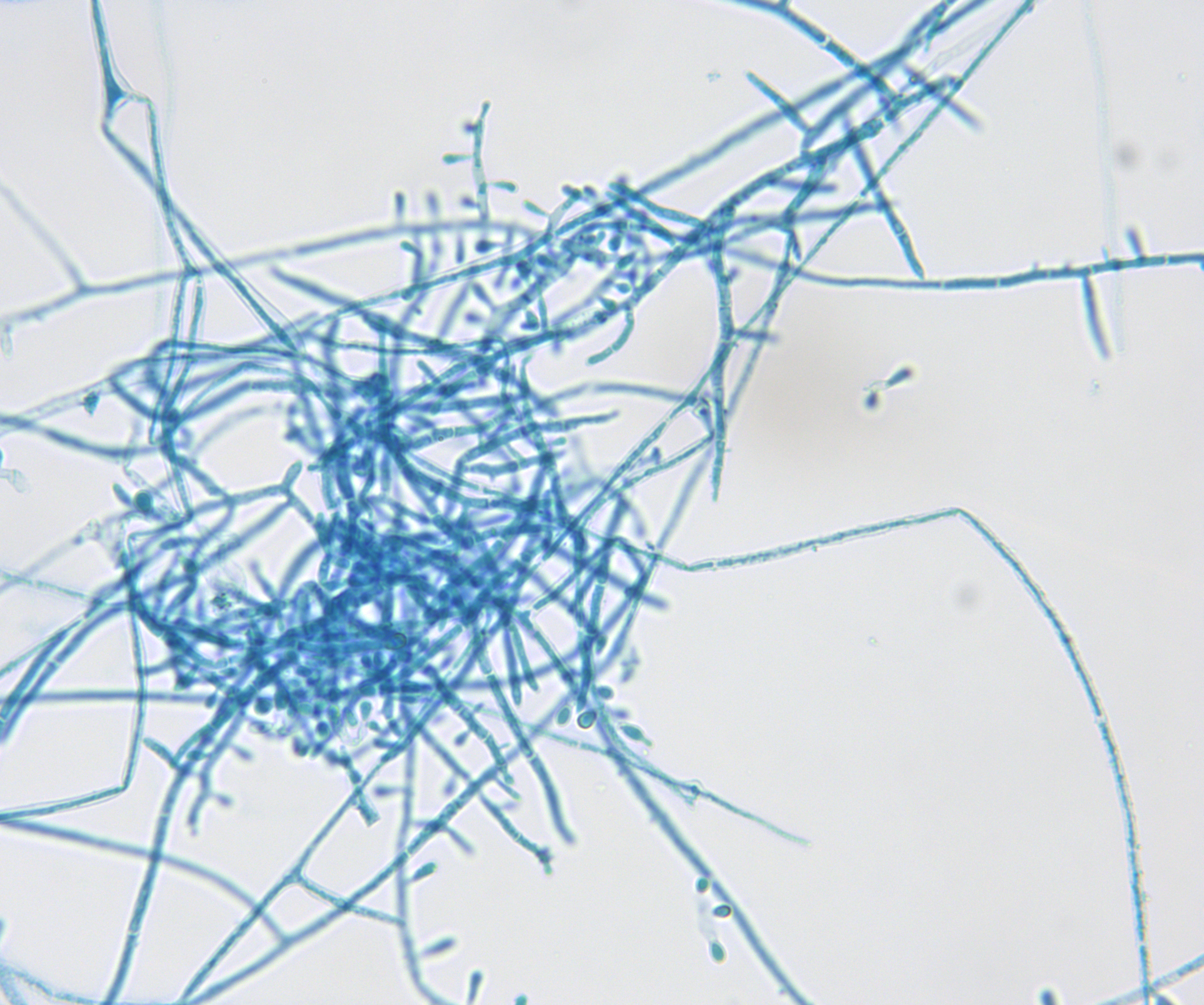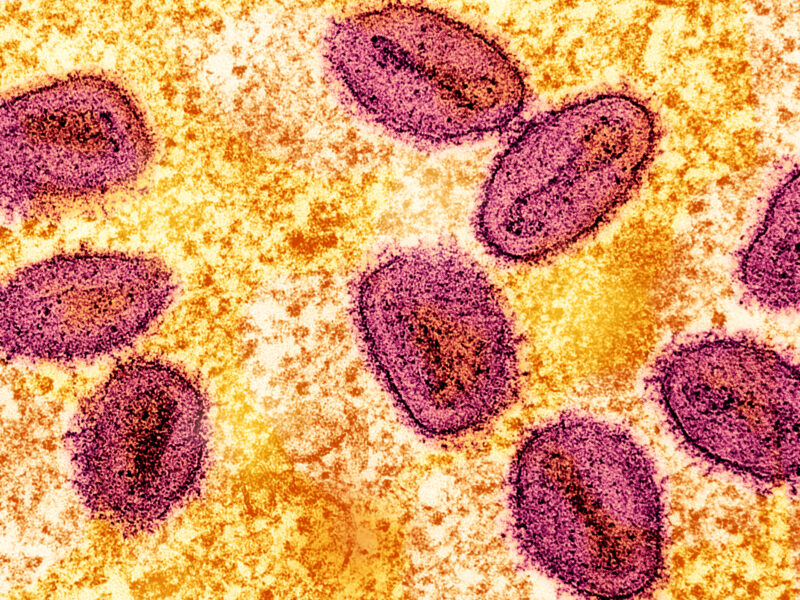Image by: Joe Rubin; CC BY-NC 2.0 DEED
A new strain of tinea pubogenitalis was recently reported in the United States.1 Pubogenital tinea or tinea genitalis is a rare type of dermatophytosis, commonly referred to as ringworm, that appears on the groin.2 This superficial fungal skin infection is most often caused by Trichophyton, Microsporum, or Epidermophyton fungi.3 Anti-fungal drug treatment is used to treat and prevent transmission of ringworm. However, there has been an increase in antimicrobial-resistant strains of ringworm over the last decade.4
The new case, reported in New York, recently returned from a trip to England, Greece, and California.5 The case developed tinea on his genitals, buttocks, and limbs.4,6 Genetic tests of samples from the case’s tinea revealed that the infection was caused by the Trichophyton mentagrophytes type VII (TMVII) species.1-4, 7 TMVII is a sexually transmitted form of ringworm that is highly contagious.7 This infection has been increasingly diagnosed in Europe, specifically in men who have sex with men.8 The New York case did report having sex during his travels, however, none of his sexual partners showed signs of TMVII.9 TMVII is not fatal, but it may lead to scarring.9 Ringworm caused by TMVII can be treated with over-the-counter anti-fungal treatments, yet it may take months for the rash to clear up.6,7 The New York case was treated with three oral anti-fungals; Fluconazole, Terbinafine, and Itraconazole.9
While TMVII responds to standard antifungal therapies, there is an alarming increase in antimicrobial-resistant strains of ringworm.2,7 Trichophyton indotineae (T.indotineae) formerly Trichophyton mentagrophytes genotype VIII, is a dermatophyte closely related to TMVII which is difficult to treat due to its Terbinafine resistance.3 Terbinafine is a first-line antifungal treatment for extensive and severe skin infections.3 Most outbreaks of T.indotineae are commonly reported in South Asia, however, there have been eleven confirmed cases in the U.S. since last year.6-10 Similar to TMVII, ringworm caused by T.indotineae is highly contagious, transmitted sexually, and impacts all genders and sexual orientations.6-10
Rates of both TMVII and T.indotineae in the U.S. remain low, though it is still important to take precautions to protect oneself. The best way to protect yourself against TMVII, T.indotineae, and other sexually transmitted infections (STIs) is to engage in safe sex practices and get tested regularly.
Sources:
- Caplan, A. S., MD. (2024). Potential sexual transmission of tinea pubogenitalis from TMVII. Fungal Infections | JAMA Dermatology | JAMA Network. https://doi.org/10.1001/jamadermatol.2024.1430
- Ginter-Hanselmayer, G., Nenoff, P., Kurrat, W., Propst, E., Durrant-Finn, U., Uhrlaß, S., & Weger, W. (2016). Tinea in the genital area : A diagnostic and therapeutic challenge. Der Hautarzt; Zeitschrift fur Dermatologie, Venerologie, und verwandte Gebiete, 67(9), 689–699. https://doi.org/10.1007/s00105-016-3848-5
- Spivack, S., Gold, J. A., Lockhart, S. R., Anand, P., Quilter, L. A., Smith, D. J., Bowen, B., Gould, J. M., Eltokhy, A., Gamal, A., Retuerto, M., McCormick, T. S., & Ghannoum, M. A. (2024). Potential Sexual Transmission of Antifungal-Resistant Trichophyton indotineae. Emerging Infectious Diseases, 30(4). https://doi.org/10.3201/eid3004.240115
- Centers for Disease Control [CDC]. (2024, April 24). Emerging severe and Antimicrobial-Resistant ringworm. Ringworm and Fungal Nail Infections. https://www.cdc.gov/ringworm/hcp/clinician-brief-resistant-infections/index.html
- Experts alert doctors and the public to the arrival of hard-to-treat fungal skin infections in the United States. (2024, June 5). EurekAlert! https://www.eurekalert.org/news-releases/1046425
- New sexually transmitted fungal infection – ringworm – found in NYC marks 1st case in US. (2024, June 10). USA TODAY. https://www.usatoday.com/story/news/health/2024/06/06/rare-sexually-transmitted-ringworm-fungus-new-york/73995222007/
- Swartz, T. (2024, June 5). New sexually transmitted fungal infection detected in NYC — the first case in the US. New York Post. https://nypost.com/2024/06/05/lifestyle/new-sexually-transmitted-fungal-infection-detected-in-nyc/
- Jabet, A., Dellière, S., Seang, S., Chermak, A., Schneider, L., Chiarabini, T., Teboul, A., Hickman, G., Bozonnat, A., Brin, C., Favier, M., Tamzali, Y., Chasset, F., Barete, S., Hamane, S., Benderdouche, M., Moreno-Sabater, A., Dannaoui, E., Hennequin, C., . . . Monsel, G. (2023). Sexually Transmitted Trichophyton mentagrophytes Genotype VII Infection among Men Who Have Sex with Men. Emerging Infectious Diseases, 29(7). https://doi.org/10.3201/eid2907.230025
- First case of rare, sexually transmitted form of ringworm reported in the U.S. (2024, June 5). NBC News. https://www.nbcnews.com/health/health-news/first-case-rare-sexually-transmitted-fungal-infection-reported-us-rcna155275
- Caplan, A. S., Todd, G. C., Zhu, Y., Sikora, M., Akoh, C. C., Jakus, J., Lipner, S. R., Babbush, K., Acker, K. P., Morales, A. E., Rolón, R. M. M., Westblade, L. F., Fonseca, M., Cline, A., Gold, J. a. W., Lockhart, S. R., Smith, D. J., Chiller, T., Greendyke, W. G., . . . Chaturvedi, S. (2024). Clinical Course, Antifungal Susceptibility, and Genomic Sequencing of Trichophyton indotineae. JAMA Dermatology. https://doi.org/10.1001/jamadermatol.2024.1126


